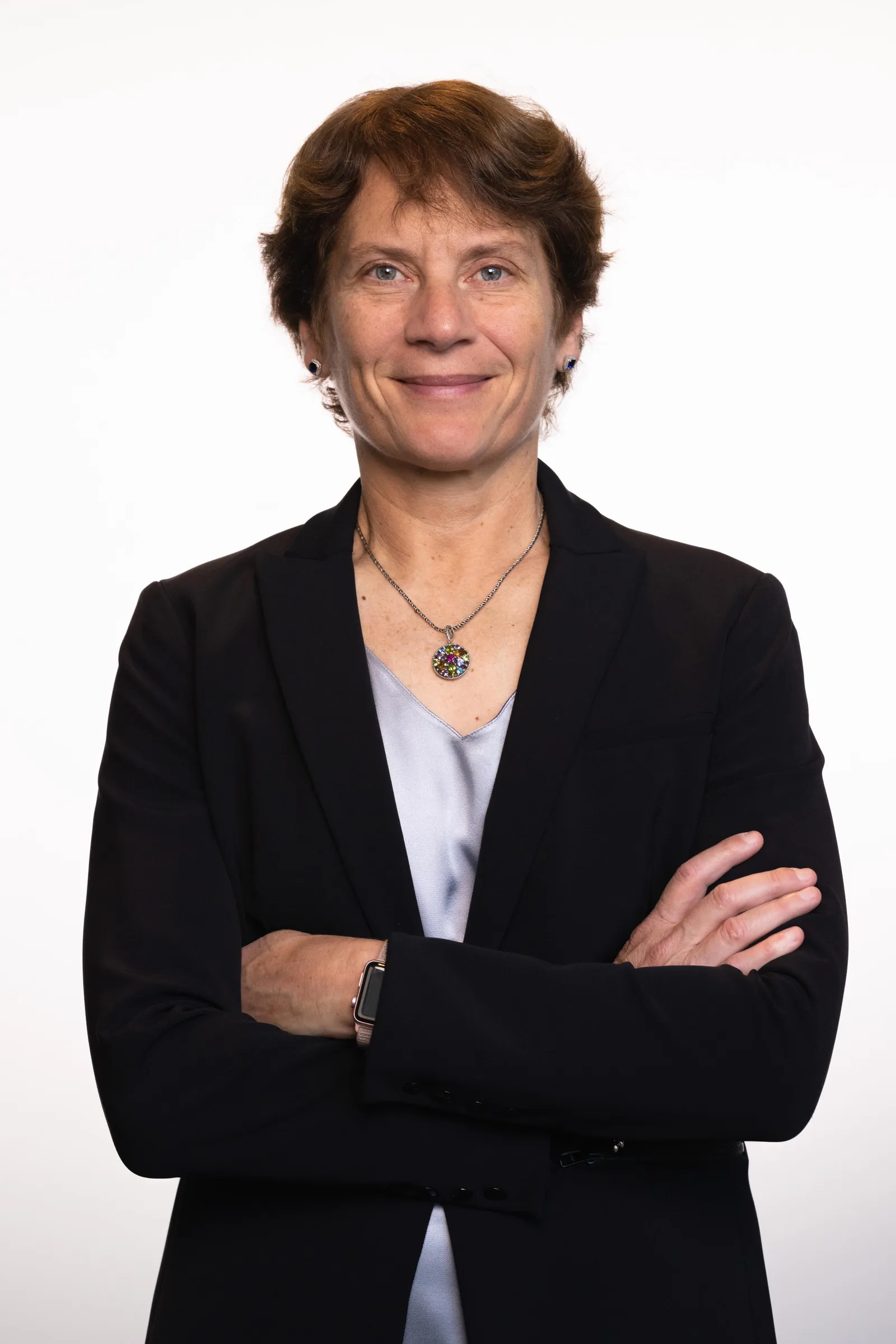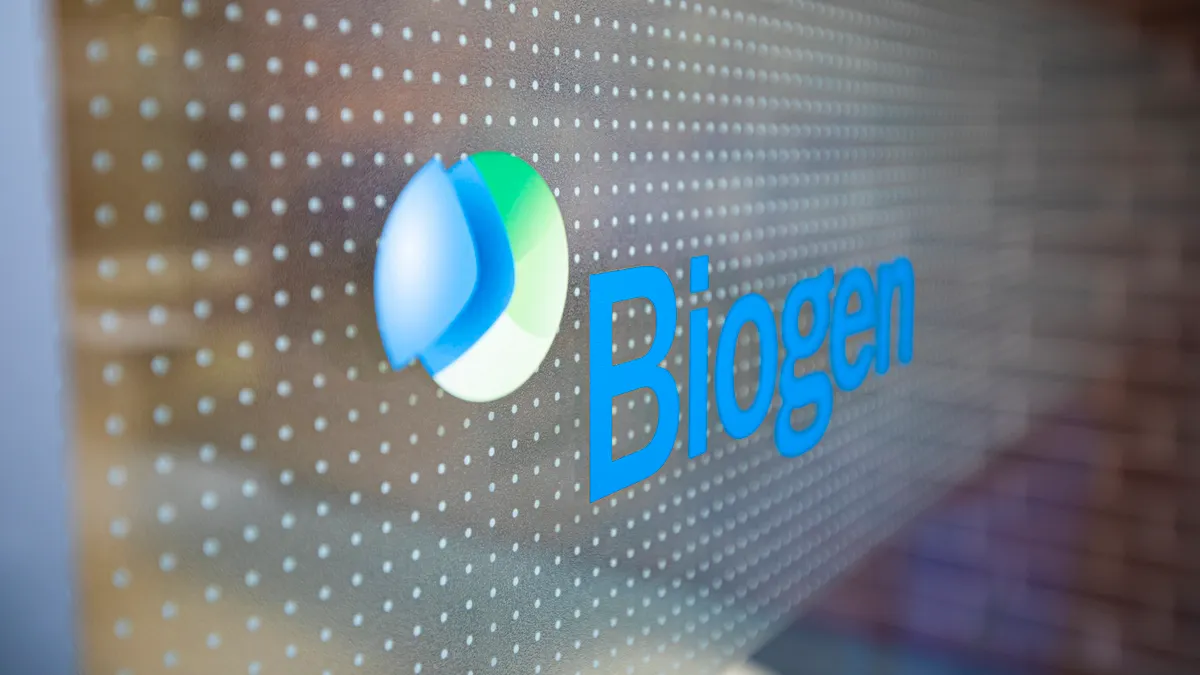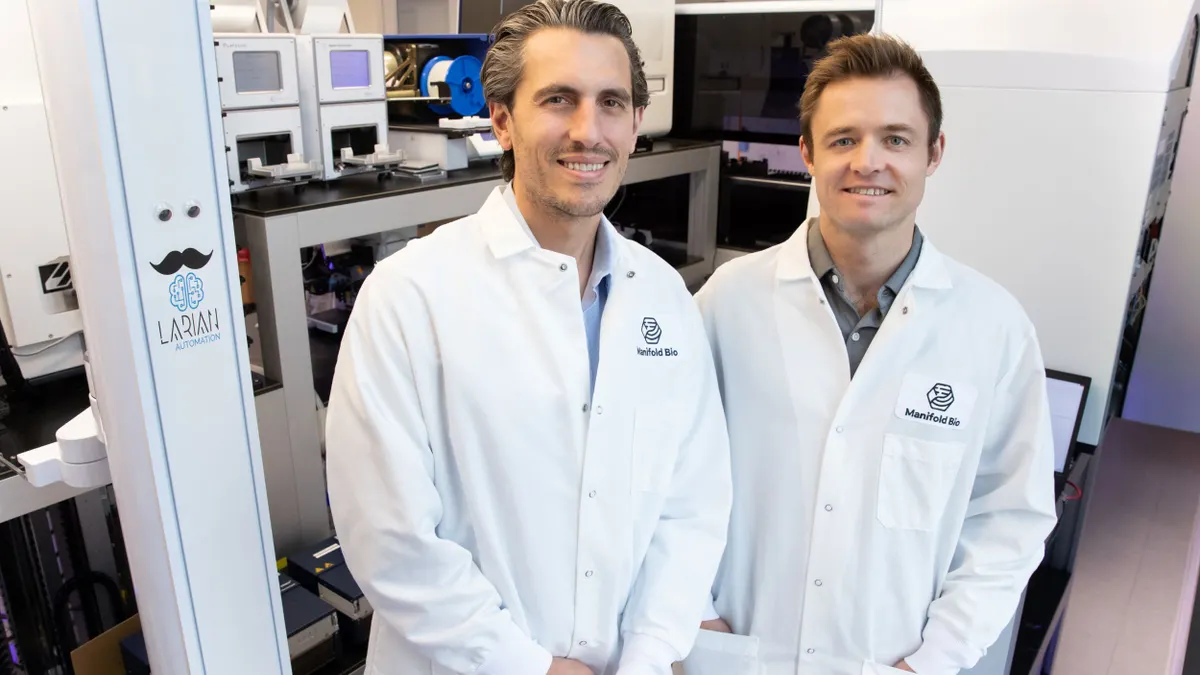Ever since Carolyn Bertozzi received the fateful call from Stockholm in the wee hours of the morning earlier this month, the now-Nobel Laurette has been on somewhat of a hamster wheel.
“Well, I’ve been busy,” she said matter-of-factly about how her life has changed since she became the eighth women ever awarded the Nobel Prize in Chemistry this year — alongside Barry Sharpless and Morten Meldal — for her contributions to the development of click chemistry, a type of synthetic reaction where two molecules can be easily snapped together without any intermediaries and without creating any byproducts.
In particular, Bertozzi, who has founded nine biotech companies in the last two decades, including InterVenn Bio, Redwood Bioscience and Lycia Therapeutics, and operates a lab at Stanford University, is credited with making the click reactions viable in living organisms — known now as bioorthogonal chemistry — by removing the copper catalyst that is typically required in click reactions but toxic to living things. She described the reactions as “two soulmates meeting in a crowded bar:” the pair of molecules in the reaction ignore everything else in the cell and are only drawn to each other.
Today, her discovery has opened up a world of possibilities and the chemistry “can be used for almost everything,” professor Olof Ramström, a member of the Nobel Committee for chemistry, said shortly after the prize was awarded. This process is particularly game-changing in the life sciences, where it has allowed researchers to more easily visualize molecules in living cells, study how cells build proteins and develop new cancer treatments.

For instance, one of the companies Bertozzi founded, Palleon Pharmaceuticals, uses a glyco-immunology drug development platform enabled by the foundational science of bioorthogonal chemistry. And Shasqi Therapeutics, a company Bertozzi serves as scientific adviser for, is in the midst of clinical trials for a first-in-human oncology treatment that uses bioorthogonal reactions. While Bertozzi does not currently serve in an executive function at any company, in her role as the Baker Family Director of Stanford ChEM-H innovation center, she has continued to research and develop chemical tools to study the glycobiology of medical conditions.
Here, Bertozzi discusses the impact of the Nobel Prize on the field, how she’s hoping the science could further revolutionize drug development, and her lesser known connection to Rage Against the Machine guitarist Tom Morello.
PHARMAVOICE: What do you believe was the last puzzle piece that showed the Nobel Prize committee the power of click and bioorthogonal chemistries?
CAROLYN BERTOZZI: (With) the science in my lab, it was really more a series of incremental advances to get the technology where we could use it the way we wanted to for in vivo chemistry, basically. So probably the biggest breakthrough, like the biggest leap from my lab was the development of a reaction we call the Staudinger ligation which we published in 2002. That was the first bioorthogonal reaction, basically, between an azide and a phosphine. We showed that you could do that not just on cultured cells, but actually in live animals. We did that chemistry inside the body of a mouse and that was the first time anything like that has ever been accomplished. So I'd say that that was probably the big moment where people saw the power of the chemistry — that you could actually do it in living systems.
The Nobel Prize shines a light on both the area of science and the people who win the prize. How do you plan to use the spotlight to push the field, which you're already a pioneer in, even further?
It's not just a spotlight on bioorthogonal and click chemistry, although it is. The truth is that these chemistries have been widely used and have been very enabling in life sciences for some time now. The people who are in the field of chemical biology already really appreciate the power of these chemistries. I think, if anything, it will pass a brighter spotlight on the power of chemical tools for life sciences research for people that are far away from chemistry — so biologists, physicians, clinicians. I've had a lot of people reach out to me, people who are doctors and who see patients, who want to understand what it's all about and the implications that it might have for new therapeutics development. These are people that might not necessarily have registered bioorthogonal chemistry as a tool for therapeutic science. They might not have ever made that connection if the spotlight wasn’t on us now.
The other thing, which is even more exciting for me, is I think it casts at least a partial spotlight on the area of glycoscience, which is the area of biology that my lab works in, and that was the origin of bioorthogonal chemistry. Originally, the motivation to develop it was because we needed better tools for studying cell surface glycans. In my lab, there's always been a really strong synergy between the chemistry technologies and the applications and life of science. And glycoscience is a field that has never had much of a spotlight on it before. To the extent that people might wonder: What's that field all about? What's happening in that field? I think that would be wonderful.
Where do you see the greatest opportunities to use bioorthogonal chemistry in drug development in the short and long term?
In the short term, there are already some huge breakthroughs in the space of clinical translation. So people have actually found bioorthogonal chemistry useful for building really complex therapeutic molecules. So hybrids between proteins and small molecules where the molecule was attached to the protein chemically, and there's a class of very important cancer drugs that fit that description called antibody-drug conjugates. Bioorthogonal chemistries are (already) being used to make antibody-drug conjugates and they're in human clinical trials. More recently, people have used the chemistry for drug delivery to target medicines to the right tissues. There's a human clinical trial right now where the chemistry is actually taking place inside the human body. So that is the near-term, that bioorthogonal chemistry is both in the manufacturing space and also taking place within the human body allowing people to make new kinds of medicines that would be impossible otherwise.
In the longer term, I think there's a role for these chemistries beyond biomedical science. Beyond human health there's a lot of interesting applications in material science. In life sciences more broadly, people who study any branch of biology, whether it's plant biology, the biology of organisms in the natural world or the study of organisms that live within our bodies, all of these complex biological systems have problems where bioorthogonal chemistry could be useful.
"If you do good experiments, and the experiment is well done … then the outcome is not what you hoped, it’s not really a failure."

Carolyn Bertozzi
Baker family director of Stanford ChEM-H
Do you have any tips for other life science leaders trying to translate their science who might not be having as much success?
I think maybe the important thing is to try and rewind the clock in your brain and remember what it felt like when you were just learning science for the very first time. For all of us, no matter what we do now, there was a time when we didn't know anything and we had to learn it from scratch. And you think about who your favorite teachers were and why were they your favorite teachers, and I'm guessing it's because they had the ability to communicate in a way that brought the subject to life. So I think maybe the message is: What can you do to bring the subject to life?
At the companies you’ve founded, how have you embraced the idea of failing with grace that you teach students in the lab? How do you think other companies can adopt that mindset?
When I say failing with grace, I'm really talking about at the individual level, and the reason I say that is because any researcher — especially an experimentalist at the lab — has to get accustomed to having experiments where the outcome is not what you anticipated or hoped for. And if you do good experiments, and the experiment is well done…then the outcome is not what you hoped, it's not really a failure. It just means that you didn't understand the situation as well as you thought you did and you learned something new and it was unexpected. So failing with grace is really just accepting that knowledge is not failure. It might be frustrating, but it is progress even if it's not what you anticipated.
A company failing is a totally different matter. A company failing is a financial problem. That's difficult, too. However, there are good ways for companies to fail and bad ways for companies to fail. Some companies fail because they set out to test a new hypothesis, and that's always risky. You will see companies that set out with a mission to test a hypothesis, they were incorrect about it, and they decided to shut down the company, acknowledging that they did their best and it's time to move on. If they can shut down the company in an orderly way, sometimes they can even return some of the value to the investors and soften the loss. That's a failure in one sense, but in the other sense, it's responsible stewardship of money. When investors invest in a company, they know they're taking a risk. And maybe as long as that money was deployed as best as it could be to test the hypothesis and mitigate the risks, that's the best you can do. So that's a successful failure of sorts.
I have to ask about your old band, Bored of Education. What was it like to be in a band with the now-Rage Against the Machine guitarist Tom Morello? What is the role of music in your life now?
I have a little electric piano in my place that I play all by myself. I don't know if that counts for anything, but it was great. One of my most precious memories from college was playing in that band and he was such a talented musician. It was so exciting to watch him play. And just, you know, he composed music and we got to play some of his originals and that was now I realize a great privilege. That was just a lot of fun. At the same time as I was playing in that band, I was taking organic chemistry and writing lab reports and doing problem sets, all the regular school stuff. Outside of school, it was nice to have something kind of cool, and kind of badass to do.




















